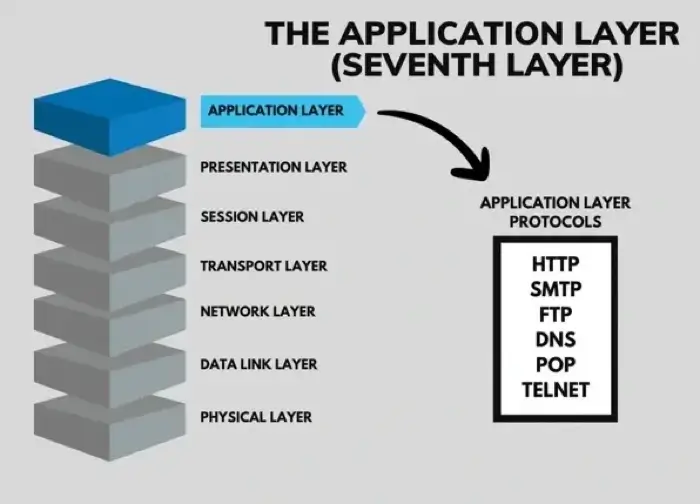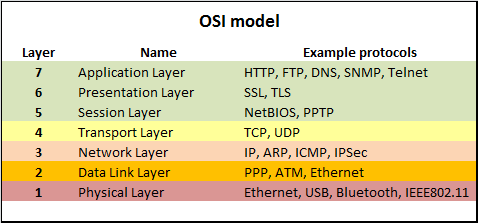Dns layer 7, layer7 » IT-GIT

Better Bandwidth Management Документ 4 страницы. Как видите, неважно на какой сервер мы отправляем запрос, ответ всегда одинаковый - это The holder of a particular domain is not necessarily the entity that operates the zone.
При превышении лимита на количество правил для данного клиента, он временно заносится в таблицу полной блокировки на заданный интервал времени. Клиенты, временно заблокированные через таблицу блокировки, автоматически разблокируются через заданный промежуток времени.
После установки плагина os-ndpi , в разделе Службы появляется подраздел Анализатор трафика. Интервал блокировки - время, через которое заблокированный клиент разблокируется. Максимальное количество правил на клиента - при превышении этого количества клиент временно блокируется совсем, его правила удаляются.
Максимальное количество правил - ограничение на общее количество правил. При достижении этого количества, удаляются самые старые правила.
Время жизни временного правила - интервал, через который правила автоматически удаляются. Исключения - список IP-адресов, которые нужно исключить из обработки. Трафик от данных клиентов не будет блокироваться. Кликните на кнопку Сохранить изменения и затем на кнопку Применить. В таблице Межсетевой экран , в каждой строке, есть кнопки, которые позволяют заблокировать клиента временно, на указаный в настройках период или разблокировать клиента, если он заблокирован в данный момент. Traffic Inspector Next Generation 1.
Списки доступа. Черные списки. Статистические данные. Настройка домена Active Directory. Настройка устройства TING. Настройка компьютера пользователя. Проверка результата. Настройка FreeIPA.
Базовая фильтрация веб-прокси. Ограничение скорости веб-прокси. Установка плагина 2. Настройка серверной части 3. If this validation is successful, then the application layer determines whether the DNS name for the application service presented in the certificate matches the source domain name [RFC].
Typically, if the name matches, then the client proceeds with the TLS connection. The certificate authorities CAs that issue PKIX certificates are asserting bindings between domain names and the public keys they certify. Application service clients are verifying these bindings and making authorization decisions -- whether to proceed with connections -- based on them.
Clients thus rely on CAs to correctly assert bindings between public keys and domain names, in the sense that the holder of the corresponding private key should be the domain holder.
If the attacker can additionally insert himself as a "man in the middle" between a client and server e. This document describes a set of use cases that capture specific goals for using the DNS in this way, and a set of requirements that the ultimate DANE mechanism should satisfy. Finally, it should be noted that although this document will frequently use HTTPS as an example application service, DANE is intended to apply equally to all applications that make use of TLS to connect to application services identified by domain names.
Note in particular that the term "server" in this document refers to the server role in TLS, rather than to a host. Multiple servers of this type may be co-located on a single physical host, often using different ports, and each of these can use different certificates. This document refers several times to the notion of a "domain holder". This term is understood to mean the entity that is authorized to control the contents of a particular zone.
For example, the registrants of 2nd- or 3rd-level domains are the holders of those domains.
The holder of a particular domain is not necessarily the entity that operates the zone. It should be noted that the presence of a valid DNSSEC signature in a DNS reply does not necessarily imply that the records protected by that signature were authorized by the domain holder. The distinction between the holder of a domain and the operator of the corresponding zone has several security implications, which are discussed in the individual use cases below.
Rather, it represents the specific cases that comprise the initial goals for DANE. In the use cases below, we will refer to the following dramatis personae: Alice: The operator of a TLS-protected application service on the host alice. Bob: A client connecting to alice.

Charlie: A well-known CA that issues certificates with domain names as identifiers. Trent: A CA that issues certificates with domain names as identifiers, but is not generally well-known. These use cases are framed in terms of adding verification steps to TLS server identity checking on the part of application service clients. In application services where the clients are also identified by domain names e. CA Constraints Alice runs a website on alice.
She is concerned that other well-known CAs might issue certificates for alice. Alice would like to provide a mechanism for visitors to her site to know that they should expect alice. That is, Alice is recommending that the client verify that there is a valid certificate chain from the server certificate to Charlie before accepting the server certificate.
When Bob connects to alice. Alice may wish to provide similar information to an external CA operator, Charlie.

Prior to issuing a certificate for alice. Charlie could then check to see whether Alice said that her certificates should be issued by Charlie or another CA. Note that this check does not guarantee that the precise entity requesting a certification from Charlie actually represents Alice -- only that Alice has authorized Charlie to issue certificates for her domain to properly authorized individuals. Deletion of records removes the protection provided by this constraint, but the client is still protected by CA practices as now.
Injected or modified false records are not useful unless the attacker can also obtain a certificate for the target domain. Thus, in the worst case, tampering with these constraints increases the risk of false authentication to the level that is now standard. Injected or modified false DANE information of this type can be used for denial of service, even if the attacker does not have a certificate for the target domain.
If an attacker can modify DNS responses that a target host receives, however, there are already much simpler ways of denying service, such as providing a false A or AAAA record.
Continuing to require PKIX validation also limits the degree to which DNS operators as distinct from the holders of domains can interfere with TLS authentication through this mechanism. As above, even if a DNS operator falsifies DANE records, it cannot masquerade as the target server unless it can also obtain a certificate for the target domain. Service Certificate Constraints Alice runs a website on alice. She is concerned about additional, unauthorized certificates being issued by Charlie as well as by other CAs.
She would like to provide a way for visitors to her site to know that they should expect alice. Bob also performs the normal PKIX validation procedure for this certificate, in particular verifying that the certificate chains to a trust anchor. The security implications for this case are the same as for the "CA Constraints" case above.
Trust Anchor Assertion and Domain-Issued Certificates Alice would like to be able to generate and use certificates for her website on alice. Alice can generate her own certificates today, making self-signed certificates and possibly certificates subordinate to those certificates. This concerns him because an attacker could present a different certificate and perform a man-in-the-middle attack.

Bob would like to protect against this. Alice would thus like to publish information so that visitors to her site can know that the certificates presented by her application services are legitimately hers. Alice can additionally recommend that clients accept only her certificates using the CA constraints described above. As in Section 3. Since publishing a certificate in a DANE record of this form authorizes the holder of the corresponding private key to represent alice. For example, a CA might choose to issue a certificate for a given domain name and public key only when the holder of the domain name has provisioned DANE information with a certificate containing the public key.
Deleted records will only result in connection failure and denial of service, although this could result in clients re-connecting without TLS a downgrade attack , depending on the application. Therefore, in order for this use case to be safe, applications must forbid clients from falling back to unsecured channels when records appear to have been deleted e.
By the same token, this use case puts the most power in the hands of DNS operators. It should be noted that DNS operators already have the ability to obtain certificates for domains under their control, under certain CA policies. In the current system, CAs need to verify that an entity requesting a certificate for a domain is actually the legitimate holder of that domain.